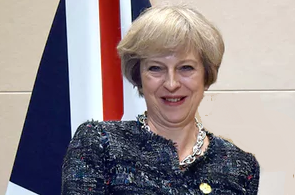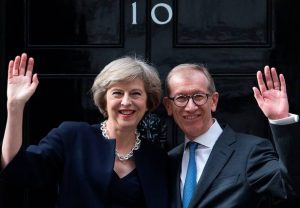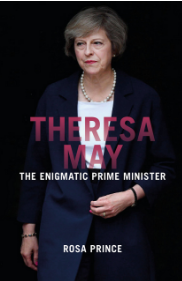
The enigmatic Prime Minister

Theresa May: The Enigmatic Prime Minister by Rosa Prince, Biteback £20, 416 pages.

Theresa May, Britain’s second female prime minister has collected several nick names during her short tenure in Downing Street, including safe hands.
May has been a Conservative MP for two decades and people and politicians, applaud her resolve. She has a strict private code to discuss only limited personal topics like shoes, clothing and cooking.
Nobody really knows May well apart from her husband Philip and her two advisers Fiona Hill and Nick Timothy.
Rosa Prince, a former political journalist for the Daily Telegraph. Who produced last year biography of Labour lead Jeremy Corbyn, has released this latest biography of Theresa May: The Enigmatic Prime Minister.
The chapters on May’s upbringing are revealing. May the daughter of a vicar, Hubert Brasier, grew up in Oxfordshire parish and attended both grammar and independent schools.
She was brought up in a converted rectory and ofcourse Christianity underpins her outlook.
May however, made an active choice to join Conservative Party in her teenage years. She spent Saturdays stuffing envelopes in a back room away from the vicarage so that her father did not compromise the impartiality of his vicarage. May, a dedicated canvasser, a Conservative to her bones, she understands provincial Middle England.
She also co-founder of Women2Win, a campaigning group to bring more women into Conservative politics. Although May struggled to be selected by local associations she carved a successful career in local government. In 1997, there were just 13 Conservative female MPs and most by her efforts the figure rose to 68 by 2015. Her first major appointment, as chairman of the Conservative party in 2002, ended in tears after she told activists they were seen as the “nasty party”. He prospects were boosted by George Osborne, the former chancellor she sacked after becoming prime minister. According Prince, as the 2010 coalition government was formed, Osborne advocated putting her in the Home Office. She returned the favour after six years after major falling out across the cabinet table.
The Home Office moulded her into a true politician, with her internal fight with the ministers and external battles with the police transformed her into a formidable leader, as before this role, she was a shy and isolated character.
May is often criticised by the media for delayed reactions to events and adequately and clearly explain her motivations. Her catchphrase “Brexit means Brexit” makes her an assiduous politician, in the midst of enormous challenges she has been facing and mind-boggling complications of Brexit, National Health Service with extreme strain and growing public discord over immigration.
Prince concludes that she can ignore her critics and keep power close and rarely delegate as she gains control of the situation, and put extreme strain on May’s character and confidence. May’s greatest challenge now is to bring together a divided country.

